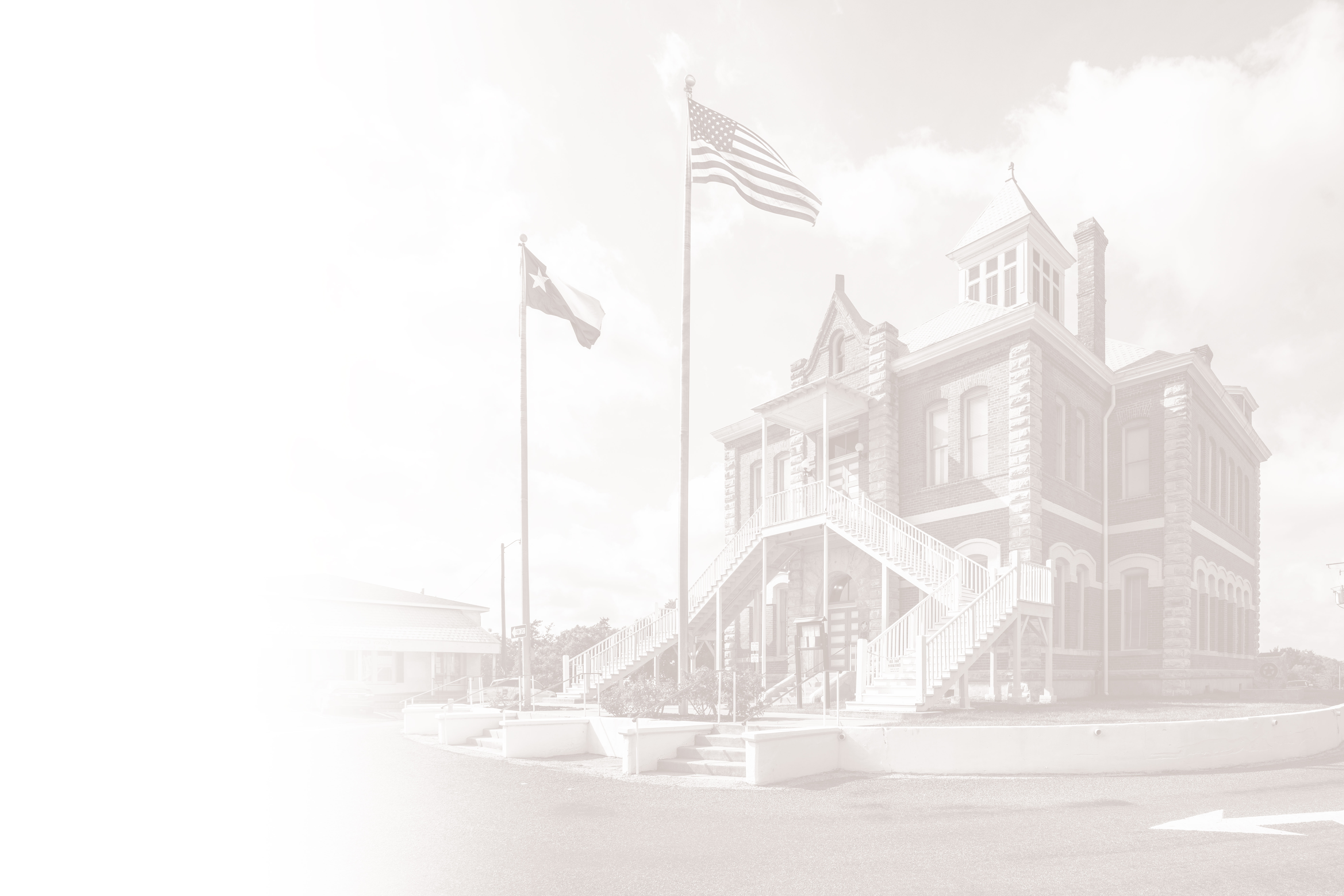Varner-Hogg Plantation’s history began in 1824 when Virginia native Martin Varner became one of 297 grantees who received a league of land from Stephen F. Austin and established his homestead in present-day Brazoria County. The Varners received 4,428 acres, and they brought at least two enslaved men to farm and raise livestock on a small scale and establish a rum distillery.
In 1834, Martin Varner sold the property to Columbus R. Patton of Kentucky. That same year the Patton family moved to Brazoria County from Kentucky with a large enslaved labor force. Several of the Patton men became active in politics prior to the Texas Revolution and three of them—Columbus, St. Clair, and William—served in the Texian army.
Between 40 and 60 enslaved people were owned by the Patton family; however, over 100 were enslaved on the plantation that was known as Patton Place. With bricks they made by hand, the enslaved people constructed the plantation house, smokehouse, sugar mill, and their own quarters. With their labor, Columbus Patton built a successful and larger than average sugarcane enterprise, complete with a two-story mill. His long, open relationship with his enslaved concubine, Rachel, became a point of contention within the Patton family and in the community.
Patton successfully managed the plantation until November 1854 when his family had him declared insane, possibly as a result of an inadequate blood flow to the brain. He was placed in an asylum in South Carolina, where he died of typhoid fever in 1856. Patton’s estate became mired in probate court when his family attempted to overturn his will. After a prolonged court battle, Rachel was given an annual stipend and allowed to live wherever she chose as promised her by Columbus. John Adriance, executor of Patton’s estate, and a Brazoria County merchant and plantation owner, became the Patton Place manager. Adriance maintained his role through 1869, when the Patton family sold the estate.
Between 1869 and 1901, the site changed ownership several times. At one point, owners used convicts through a leasing program as laborers. In 1875, however, state investigators found “particular cruelty” toward convicts at Patton Place. This unfavorable attention combined with the rising cost of convict labor ended the use of prisoners and the plantation turned to a sharecropping system.
Looking for sources of income that required less labor than sugar production led owners to try growing cotton on Patton Place with little success. In 1876, the Texas Land Company purchased the plantation and gradually switched the site’s focus to ranching. The majority of the laborers, now cowboys, were African Americans.
The plantation sustained major damage in the 1900 hurricane. Many of the original buildings, including the sugar mill, were destroyed. In 1901, former Texas Gov. James Stephen Hogg purchased the land, convinced that large amounts of oil lay beneath the surface. Large quantities of oil were never found during his lifetime. When Gov. Hogg died in 1906, his will recommended his children not sell the mineral rights for at least 15 years. Within that time period the Hogg heirs struck oil, making them all very wealthy.
While none of the Hogg children made Patton Place home, they each spent time at the site. Long weekends with visitors, dinner parties, and outings to the country brought them to the house. In 1919, the Hoggs made several modifications to the house producing its current appearance.
In 1958, Ima, the governor’s only daughter and surviving child, donated the plantation to the State of Texas. Before turning over the property, Ima, a great collector and decorative arts lover, furnished the home to reflect her father’s love of history and her own admiration for George Washington and other early Americans.
Did You Know?
- Gov. James Hogg had a special outdoor bathtub built to accommodate his large size. The “tub” is a square, bricked-in hole fed by an artesian well, and still remains on site.
- Varner-Hogg Plantation is named for Martin Varner and Gov. James S. Hogg, two of the plantation’s three prominent owners. The third owner was Columbus S. Patton.
- In 1849, Patton Place produced 275,000 pounds of sugar and 22,000 gallons of molasses!
- Mexican Gen. Santa Anna was held prisoner on the plantation for a short while after the Battle of San Jacinto.
- One of the governor’s sons, Mike, listed a tract of 50 acres around the plantation house that he thought should be donated to the state after the death of his sister, Ima, and his wife, Alice.
